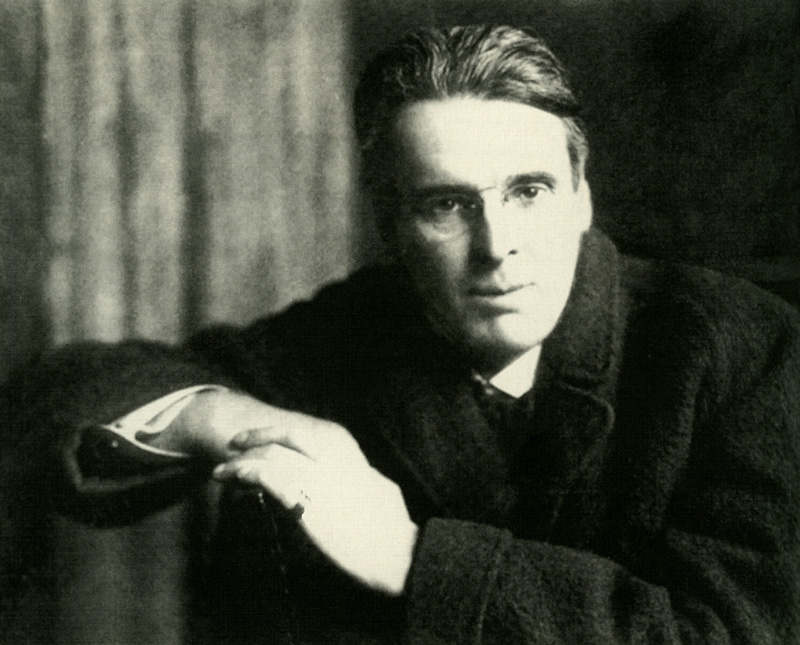William Butler Yeats was born in Sandymount, Dublin in 1865 and raised in Co. Sligo, London, and Dublin. He is the greatest poet that Ireland has ever produced, and yet, when he won the Nobel Prize for Literature in 1923, he elected to speak about his theatre work in his acceptance speech. Many, including Yeats’s biographer R.F. Foster, have understandably found this rather odd; and yet, there is a case to be made that Yeats’s strong international profile was based not only on his achievements as a poet but also on his co-founding of the Abbey Theatre.
Yeats and his fellow co-founders of the Irish Literary Theatre (precursor to the Abbey) – Lady Augusta Gregory and Edward Martyn – initially set out to create drama that was aimed at a small, discerning audience and that had high artistic purpose; however, the Abbey eventually became a state-subsidised national theatre specialising in relatively naturalistic comedies and social satires which were written to appeal to the masses. While such a theatre may not have been what Yeats had dreamed of, it must be remembered that most of the theatre’s important early achievements were with plays that were initially unpopular or that even (in the case of plays by J.M. Synge, Seán O’Casey, Bernard Shaw, and – indeed – Yeats himself) caused riots and/or heated public debate. It must also be remembered that, while Yeats’s poetic plays were never particularly popular – with the exception of the fiery Nationalist piece from 1902, Cathleen ni Houlihan (co-written with Lady Gregory) – he did produce some important artistic successes which greatly influenced later Irish playwrights. Indeed, critics such as Anthony Roche, Katherine Worth, and Seán Kennedy have shown what a significant influence Yeats was on Samuel Beckett; and Ian R. Walsh has demonstrated that Yeats’s work also left its mark on several lesser-known playwrights working in Ireland in the mid-twentieth century.
Although the theatre that Yeats co-founded has been reluctant to stage full productions of his work in recent years, many of his plays certainly deserve to be seen by new audiences. While critics may debate the merits of many of his Cuchulain plays, Cathleen ni Houlihan and two of his late dramas – The Words Upon the Window-pane (1930) and Purgatory (1938) – are bona fide masterpieces. And his Four Plays for Dancers (1916-1921), which are heavily indebted to Japanese Noh drama, are certainly fascinating – especially 1916’s The Dreaming of the Bones, which is set near Corcomroe Abbey in the Burren and which tells of a meeting between a fugitive from the 1916 Rising and the spirits of Dermot and Dervorgilla (famous star-crossed lovers from 12th-century Ireland).
Plays
- Cathleen ni Houlihan (co-written with Lady Gregory) (1902)
- FOUR PLAYS FOR DANCERS: At the Hawk's Well / The Only Jealousy of Emer / The Dreaming of the Bones / Calvary (1916-1921)
- TWO LATE PLAYS: The Words Upon the Window-pane (1930) / Purgatory (1938) (edited by David Clare)
Find out more
For more on this playwright from an Irish Studies perspective, see the chapters on Yeats in Katharine Worth’s book, The Irish Drama of Europe from Yeats to Beckett (2014).

